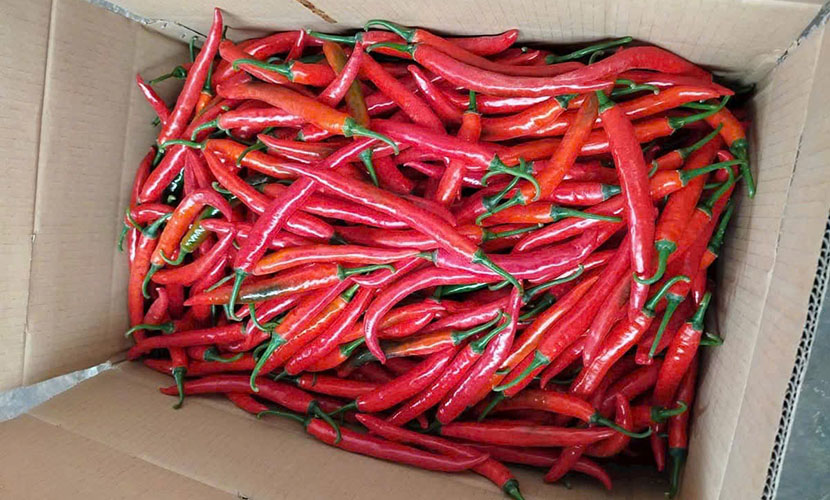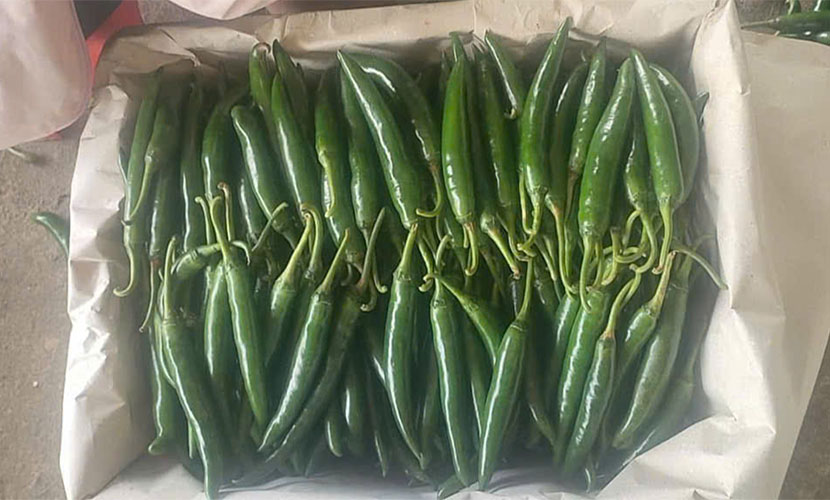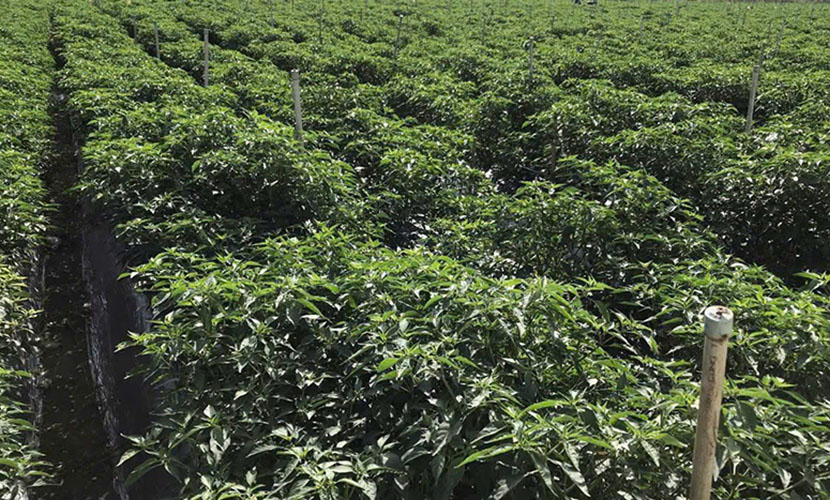
In 2022, Mr. Liem, a resident of Dong Trieu Town, piloted over 1 hectare of Vietnamese chili for export. After just over two months of cultivation and care, the model yielded a high-quality, high-yield harvest. Notably, a partnered company promised to purchase the entire chili output, then export to South Korea. This is the first export-oriented chili cultivation model in Dong Trieu Town. It would promise a new direction that brought high economic efficiency for local farmers.
These days, Mr. Liem’s family is busy harvesting their first crop of Korean green chili peppers. He shared: “At the end of 2022, our family began renting land from neighboring households to pilot an export chili cultivation model on an area of 1 hectare. In the beginning, we faced many difficulties due to lack of experience. However, through persistent learning via media and field visits to nearby areas, our model is now developing steadily.”

Vietnamese chili for export
According to his experience, he should choose suitable soil types, such as sandy loam with a low pH level. Also, the growing site must ensure good drainage and avoid from wind and storms. Moreover, the planting location must be rotated regularly because planting Vietnamese chili for export on the same plot for two consecutive crops results in reduced yield.
Therefore, his family often intercropps with other crops such as fresh carrot in one season and chili in another. Before planting, he should plow the land and leave fallow for 15 days while removing weeds and applying base fertilizer. Then, he prepared beds about 30–35 cm high and 80 cm wide. Chili seedlings are transplanted at about 25 days old (with 7–8 leaves). The planting distance between chili plants is about 60 cm.

Green chili for export
Mr. Liem added: “During cultivation, plants need regular fertilization, irrigation, and monitoring for diseases such as red spider mites and anthracnose. Around 45 days after planting, the chili plants begin to bud and bloom. This is a crucial period for fruit development, so we focus on pest control and care. In just over two months, the chilies are ready for harvest.”
To date, he has invested over VND 400 million to expand the Korean green chili cultivation model to three hectares. They included two hectares of sweet chili and one hectare of spicy chili. Since the beginning of the harvest season, the farm has yielded over 20 tons of various green chili peppers.
He expected that by the end of the season, the total harvest would reach over 60 tons. The Korean green chili variety produces large fruits, about 40 fruits per kilogram. Each sao (360m2), the average yield reaches approximately one ton of fresh chili.

Vietnamese chili farm
Economically, this variety generates profits 3 to 4 times higher than rice farming. All chili output is purchased by a Korean company at an average price of VND 14,000 per kilogram. Currently, Mr. Liem’s model provides jobs for 10 local workers with an average income of VND 6 million per month.
From now until the end of 2025, Mr. Liem plans to expand the chili cultivation model to eight hectares in Dong Trieu Town. He has now mastered chili propagation techniques, enabling him to be proactive in sourcing seedlings for scaling up this model in the near future. The success of this model has opened up a new direction in agricultural transformation, enhancing productivity on the same farming land area.
Vietnamese source: https://baoquangninh.vn/dong-trieu-nhan-rong-mo-hinh-trong-ot-xuat-khau-3231878.html
